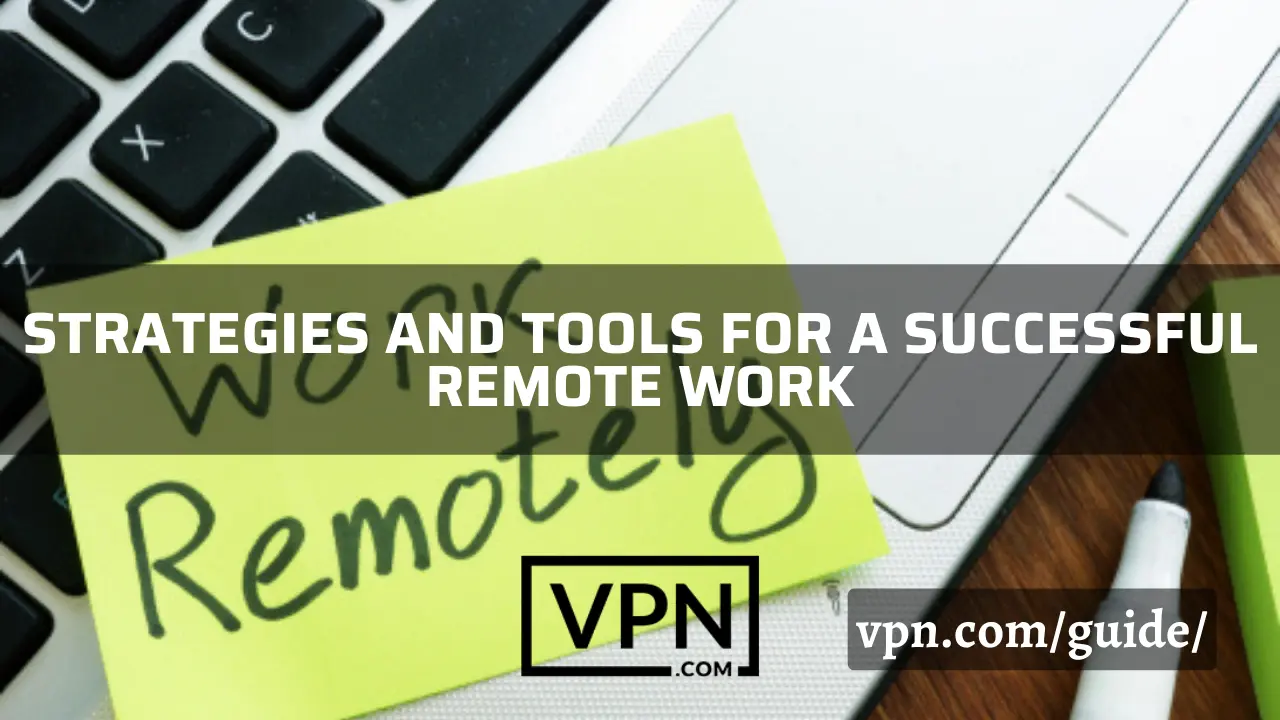VPN.com Discusses Best Business Practices Amid Coronavirus COVID-19 Outbreak

COVID-19, commonly known as coronavirus, is spreading internationally at a rapid pace. On March 11, 2020, the World Health Organization (WHO) officially declared the spread of coronavirus a pandemic.
For business owners and managers, it’s important to consider contingency plans to protect your employees, vendors, and customers while waiting for the pandemic to run its course. Understanding the best business practices to adopt during the COVID-19 outbreak can help you face the coming weeks with minimal disruption to your business.
What is Coronavirus?

The coronavirus family contains several viruses that both humans and animals can contract. While some coronaviruses are essentially versions of the common cold, the more well-known ones, including MERS (Middle East respiratory syndrome) and SARS (severe acute respiratory syndrome), have been responsible for severe public health crises.
The current iteration of coronavirus spreading around the world has been labeled by scientists as COVID-19, short for “coronavirus disease 2019.” The virus originated in China, where it may have originally spread from animals to humans. Person-to-person transmission in China quickly caused a COVID-19 epidemic, and the virus has spread to many other countries, including the United States.
COVID-19 is commonly compared to influenza. One of the major differences between coronavirus and most strains of the flu, however, is the length of time a person can be infected without showing symptoms.
The average incubation period for the flu is generally about two days. People with coronavirus, in contrast, can take up to two weeks to experience any symptoms. During this time, those asymptomatic people are contagious. This factor is key to understanding the rapid worldwide spread of the disease.
A greater percentage of people who contract coronavirus also end up with severe or critical cases. While about 80% of people with coronavirus will have mild cases or may not even experience any symptoms at all, the other 20% of cases become severe quickly. WHO notes that 15% of COVID-19 cases are serious and require oxygen, and the remaining 5% are critical, with patients being put on ventilators and respirators for survival. The mortality rate for coronavirus cases is anticipated to be between 3% and 4% (compared to the flu’s mortality rate of .1%).

Get Started w/ NordVPN Today
- Top-rated VPN for OS unknown
- Ultra-fast speed in US in 2024
- Save 69% off with VPN.com Discount
- Plans starting at $2.99/month
GUARANTEE
Coronavirus Symptoms
Coronavirus is primarily a disease of the respiratory system and symptoms are similar to those seen with various types of influenza. As such, it manifests through cough and shortness of breath, combined with fevers that are usually quite high. Anyone experiencing these symptoms should call a doctor before going to an emergency room or urgent care center.
Someone with these symptoms may have coronavirus, or they may have a strain of the flu. Someone with a runny nose and no fever is most likely to have a common cold. While the vast majority who catch coronavirus will recover, severe cases can result in kidney failure, severe respiratory issues, and death.
Countries Affected by Coronavirus
As of March 13, more than 126,000 people have tested positive for coronavirus around the world. So far, 67,000, or approximately half, have recovered. More than 4,600 have died of the virus.
Since the virus started in China, it’s no surprise that the country has seen by far the most cases, with approximately 80,000 people infected. China combined with South Korea, Iran, and Italy account for almost 90% of the coronavirus cases worldwide. However, the virus is now present in about 120 countries, so those numbers are expected to change.
Businesses Affected by Coronavirus
Businesses of all types are being severely hit by the rapid spread of COVID-19. Major gatherings such as the E3 gaming convention, Facebook’s F8 conference, SXSW, and Google I/O have been canceled. Other events, including major entertainment events such as the Coachella Music & Arts Festival, have been cancelled.
In fact, the entertainment sector looks to be particularly hard hit, with Broadway theaters, all Disney theme parks, and institutions like the Metropolitan Museum of Art and Metropolitan Opera all closing. The sports world is also shutting down, with the NBA, NHL, MLB, MLS, and Premier League all canceling or postponing their seasons.
Small businesses are being badly hit by the coronavirus pandemic as well. Restaurants and retailers are suffering as people stay home. In addition, educational institutions are shutting down around the world, many for a few weeks and others for the rest of the school year.
Many companies are choosing to have employees work from home, while others are expanding sick leave policies. Some companies have been badly hit by delays and gaps in their supply chains, especially businesses who source goods from China, where transportation of goods is falling to as much as 60% below capacity.

Get Started w/ NordVPN Today
- Top-rated VPN for OS unknown
- Ultra-fast speed in US in 2024
- Save 69% off with VPN.com Discount
- Plans starting at $2.99/month
GUARANTEE
Best Business Practices During the Coronavirus Pandemic

Business owners and managers are understandably concerned about what the pandemic means for their own organizations. Making the situation more complex is the inability to predict quite yet how the pandemic will develop or how long it will last. Should businesses plan for a few weeks of crisis or several months? No one is sure yet.
Different industries are impacted at different levels and need to take different precautions. For example, the entertainment industry, often considered recession-proof, is taking a particularly hard hit.
With the situation changing on a day to day basis, it’s hard even for the experts to predict what will happen next. While this complicates the ability of business leaders to plan and take action, some basic best practices can help your company weather the coronavirus outbreak with as much physical, psychological, and financial health as possible.
1. Stay Transparent
Some of your workers may feel panicked over any changes you’re proposing. The best way to lead your organization during this outbreak is to set an example by staying calm. Provide all the information you have about the effects the pandemic is having on your company, even if this means updating employees daily or more often.
Keep lines of communication open by utilizing email, group texts, online town halls, videos, and chat groups to make sure all employees are receiving the information they need. Help employees understand what they can do to help prevent the spread of the virus and what they can expect in terms of work demands and compensation. Make clear what resources are available to them while working remotely. Every piece of information you disseminate about the coronavirus should come from reputable sources such as the CDC.
2. Keep The Workplace Clean
Early indications are that the coronavirus can live on surfaces for up to nine days. That includes door handles, tables, keyboards, toilet handles, and every other surface that people touch every day in your workplace. You can help keep your office healthy (and your employees feel more secure and cared for) by providing hand sanitizer and sanitizing wipes to remove germs from hands and surfaces. Some employees may want to wear gloves, so provide some non-latex disposable options for them.
As a leader, you can set the pace by wiping down your own office on a regular basis and by wearing gloves or sanitizing hands frequently. Make sure you have plenty of soap in your restrooms, and replace hand dryers with paper towels to avoid spreading germs.
You may even want to bring in thermometers so people can take their temperature, reassuring others (and themselves) that they’re not sick.
In some workplaces, it may also be a good idea to wear masks. According to WHO, you should wear a mask if you are in contact with someone who has been diagnosed with or is suspected of carrying COVID-19. Employees who are coughing or sneezing, even from other causes, may also want to wear a mask. We suggest the 3M P100 model for the best protection from airborne particulates.
3. Keep Sick Employees Home
If any of your employees have a fever of over 100.4°, they should not be at work. Send them home until they are fever-free for over 24 hours. If you have traditionally required some version of a doctor’s note to verify sick leave, dispense with that policy and take your employee’s word for it. Hospitals and medical practitioners are expected to become overloaded with patients in the coming weeks, and your employee may not have been able to be seen.
Now is also a good time to review your sick leave policy. If you cap the number of days an employee can be paid for sick leave, consider extending or removing that number. You should also extend your policy, if needed, to allow employees to take sick days to care for an ill relative. If you plan to cut back the hours of hourly employees, consider paying them for their full hours anyway. Remember, many of them may lose health insurance coverage if you reduce their hours. You may also want to talk with your employees about whether the health insurance coverage you provide is doing the job it needs to do during this outbreak.
4. Cancel Travel Plans and Large Gatherings
The CDC, which recommends canceling all non-essential travel, maintains an updated web page with news about the latest travel restrictions. If you have employees who regularly travel abroad on behalf of your organization, bear in mind that they may not be able to re-enter your country’s borders.
Many large conventions and festivals have already cancelled their events during the next month or so. You may want to cancel any large gatherings that your business is hosting. Check with your business insurance provider to see if you have coverage to reimburse you for any losses you might sustain.
5. Create Alternate Workflow Plans
As the coronavirus outbreak spreads, you may find employees unable to come in due to illness. Many employees may also need to stay at home, possibly working there remotely, as schools close and they have to care for their children.
To prepare for these possibilities, determine what essential functions your business can’t cease if it’s to remain in operation. Then start cross-training workers right away. That way, you’ll have personnel available who know how to handle those essential functions in the event of high absenteeism.
You should also determine the triggers that will cause you to suspend some of your non-essential functions. In addition, start determining which functions can be handled remotely, so you can redirect as many employees as possible to work from home.

Get Started w/ NordVPN Today
- Top-rated VPN for OS unknown
- Ultra-fast speed in US in 2024
- Save 69% off with VPN.com Discount
- Plans starting at $2.99/month
GUARANTEE
Strategies and Tools for a Successful Remote Work Policy

One of the most effective ways to keep your business operational during the coronavirus outbreak is to transition to remote work wherever possible. While this isn’t possible for all industries, technology makes it remarkably easy to make this shift in a productive manner. Take a look at some of the best practices for employees who need to work from home during the coronavirus outbreak.
Obstacles to Overcome
If your business doesn’t typically offer employees the ability to work remotely, you may be less prepared than you’d prefer to face some of the challenges involved in setting up a successful remote workflow. Some of the factors you’ll need to consider include:
- Cybersecurity – Your employees may have the technology to work from home, but the security on their home networks is likely to be less than adequate for your needs. As you shift your business to remote work, you need to make sure your employees understand security best practices, and you should provide them with a VPN and anti-malware software to protect company data. Make sure that you also provide backup and recovery resources.
- Digital access – Your employees may not have the broadband Internet access needed to conduct business effectively. Providing them with mobile Internet access can help keep your whole team connected.
- Communication – When you can see your coworkers face-to-face on a regular basis, you can clarify any misunderstandings right away or toss around ideas for solving problems or creating new initiatives. Remote work takes away this easy flow of ideas. Providing communications tools and establishing clear protocols for their use become necessary to keep communication fluid and productive.
- Supply chain management – Many companies are experiencing severe supply chain issues because of the coronavirus crisis, and others that are further down the chain can expect them within a few months. Companies that source goods from China, South Korea, Japan, Italy, and other highly affected regions will likely be affected. Understanding where your business is vulnerable can help you plan for necessary adjustments. If your remote workers are affected by supply chain gaps, look for ways to source the same materials locally.
- International travel – If your company has employees in the field, they may find themselves unable to travel due to restrictions caused by the coronavirus crisis. Planning in advance to make sure they are able to continue to work remotely by providing the needed technology can help you to keep your team active and productive.
1. Protect Your Data and Other Assets With a VPN
When your employees shift to working remotely, they may be using their own laptops or mobile devices. They almost certainly won’t be conducting online work with the level of security you provide in your own offices. That creates a new level of vulnerability — without protection, your company’s data and that of your clients could be at real risk.
One of the key steps you can take to provide the protection you need is to use a VPN. A VPN acts as a private tunnel that protects online transmissions from end to end, with encryption providing an extra layer of security.
Your remote workers can use your company’s VPN from any device or location. Once they turn on the VPN, they can work with a level of security that should make you feel safe. Incorporating other security elements, such as dual-factor authorization, adds to that security. You have a lot of choices when searching for the right VPN for your business, so factor in issues of speed, cost, available locations, and what devices are compatible with the VPN you’re considering.
2. Take Advantage of Collaboration Tools
One of the biggest changes for employees when they shift to working remotely is the loss of camaraderie and collaboration. The opportunities to interact with other workers, even on casual matters, are more important than one might expect. The loss of them can affect workers in unexpected ways.
To allow everything from concentrated collaboration to the casual conversations that make the workday pleasurable, invest in the collaboration tools your company needs. Most collaboration software brings employees together in some form of central hub, but not all tools are equal. Some services that may help your remote workers include:
- Slack can connect hundreds, even thousands, of users at once, making it ideal for large organizations. Users can organize topic-related channels, direct message each other, and even set up phone calls through Slack.
- Podio is useful if you expect to have many employees working from mobile devices, including tablets. This easy-to-use app integrates with Google Drive, Dropbox, Evernote, and more, and it allows easy file sharing.
- Trello takes collaboration beyond just communication, providing project management software that lets employees maintain their workflow even when working remotely. Users can create to-do lists, assign tasks, provide feedback, and more, all working off either a board or list format.
- Wrike is a scheduling and project management tool that helps your entire team stay updated on each other’s contributions. Its ability to integrate with Salesforce, Adobe, Github, Google, and more makes it a smart choice as a central hub facilitating collaboration.
3. Provide Equipment Needed for Remote Work
It’s easy to take for granted all the technology that you have at your workplace — but many of your employees may not have what they need to work from home successfully. Yes, they undoubtedly have Internet access, but do they have the broadband needed to conduct business? They may also need software on their home computers. In some cases, you may be able to license what they need on a short-term basis.
In addition, employees who use desktops at home may not have webcams for video conferencing, and they may also need headphones with mics to be able to communicate well. Before you send your staff home to work, conduct a survey to find what equipment they need, and have it sent directly to their homes to get their remote work started on the right foot.
4. Teach Remote Working Skills
The shift to working remotely doesn’t happen easily, so any help you give your employees to make the adjustment will be appreciated. Managers should go out of their way to set the tone with a positive outlook. Make sure your teams have everything they need to continue to work productively and check in with them on a regular basis, even when things seem to be flowing well. Now is the time to be especially inclusive, making sure that everyone has the same information and access.Providing your workers with information on how to work successfully from home will help the shift flow smoothly.
Encourage workers to set aside a dedicated spot for work to prevent distractions, and ask them to work on a regular routine, reporting in at designated times.
If your employees are used to communicating by messaging and email, encourage them to shift to phone calls and video conferencing to help maintain the interpersonal contact they’ll be missing for a while.

Get Started w/ NordVPN Today
- Top-rated VPN for OS unknown
- Ultra-fast speed in US in 2024
- Save 69% off with VPN.com Discount
- Plans starting at $2.99/month
GUARANTEE
Conclusion
As you help your organization prepare to cope with the coronavirus outbreak for an indefinite period of time, following these best practices can help keep your business — and your employees — healthy. Keep up to date by checking the CDC website for the latest on the spread of the virus and on other public health measures. And as you outfit your employees for remote work, check with VPN.com to find the right VPN to keep your data private and your workflow moving.
Customer Reviews for NordVPN: In-Depth Review, Tests, and Stats

Connection issues with MLB.TV
May, 2 2023

Prompt customer service
May, 6 2023

I would highly recommend
December, 15 2023



